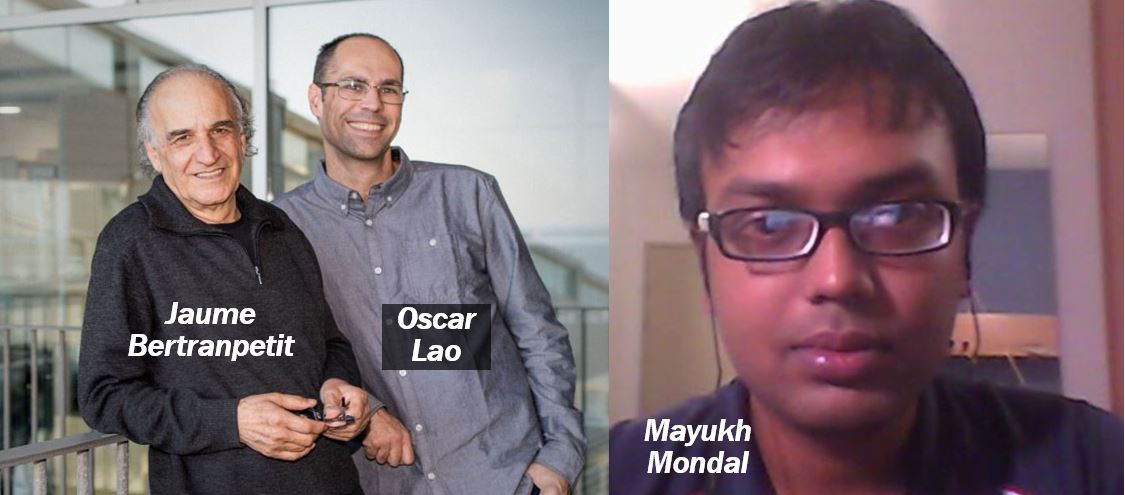
When researchers combined deep learning algorithms and statistical methods, they identified an unknown human ancestor. They identified the footprint of a new hominid that cross-bred with its ancestors tens of thousands of years ago.
Two species that can cross breed do not usually produce fertile offspring. That is one of the ways of distinguishing between two different species. When researching extinct species, this concept is much more complex. The current human DNA’s story, in fact, blurs the lines between these limits, preserving fragments from other species, such as Denisovans and Neanderthals, that coexisted with modern humans in Eurasia over 40,000 years ago.
Now, Mayukh Mondal, Jaume Bertranpetit, and Oscar Lao have used deep learning in a study. They used deep learning to identify an unknown human ancestor that bred with modern humans tens of thousands of years ago.
The researchers wrote about their study and findings in the prestigious journal Nature Communications (citation below).
Modern humans bred with Neanderthals and Denisovans
Prof. Bertranpetit, Principal Investigator at the IBE (Institut de Biologia Evolutiva) and Professor at Universitat Pompeu Fabra in Barcelona, said:
“About 80,000 years ago, the so-called Out of Africa occurred, when part of the human population, which already consisted of modern humans, abandoned the African continent and migrated to other continents, giving rise to all the current populations.”
“We know that from that time onwards, modern humans cross bred with Neanderthals in all the continents, except Africa, and with the Denisovans in Oceania and probably in South-East Asia, although the evidence of cross-breeding with a third extinct species had not been confirmed with any certainty.”
Deep learning – deciphering keys to human evolution in ancient DNA
The existence of a third ancestor had been just a theory that explained the origin of some fragments of our genome. Deep learning made it possible to transition from DNA to the demographics of ancient (ancestral) populations.
The researchers faced a major challenge. Demographic models they had analyzed were much more complex than any other model they had considered. Also, no statistical models existed to analyze them.
Dr. Lao, Principal Researcher at CNAG-CRG at the Barcelona Institute of Science and Technology, an expert in these types of simulation, said:
“Deep learning is an algorithm that imitates the way in which the nervous system of mammals works, with different artificial neurons that specialize and learn to detect, in data, patterns that are important for performing a given task.”
“We have used this property to get the algorithm to learn to predict human demographics using genomes obtained through hundreds of thousands of simulations. Whenever we run a simulation, we are traveling along a possible path in the history of humankind. Of all simulations, deep learning allows us to observe what makes the ancestral puzzle fit together.”
Deep learning explaining human history – a first
The researchers say that this is the first time deep learning has been used successfully to explain human history.
They believe that this technology could help answer other questions in evolution, genomics, and biology.
The extinct hominid was likely a descendant of the Denisovan and Neanderthal populations, deep learning analysis has revealed.
The discovery of a fossil with these traits last summer appears to endorse the researchers’ findings. It, therefore, consolidates the hypothesis of this third species that coexisted and mated with modern humans.
Dr. Mondal, a Researcher at the University of Tartu in Estonia, said:
“Our theory coincides with the hybrid specimen discovered recently in Denisovan, although as yet we cannot rule out other possibilities.”
Deep learning and artificial intelligence
Deep learning, a sub-field of machine learning, is concerned with algorithms inspired by artificial neural networks. It is based on learning data representations rather than task-specific algorithms. Learning can occur with full supervision, part supervision, or no supervision.
In other words, deep learning refers to software programs that try to mimic the human brain. It is inspired by neuroscience.
AI stands for Artificial Intelligence. It refers to software that makes machines think like us (humans). It also makes them behave like us.
Citation
“Approximate Bayesian computation with Deep Learning supports a third archaic introgression in Asia and Oceania,” Mayukh Mondal, Jaume Bertranpetit, Oscar Lao. Nature Communications 10, Article number: 246 (2019). DOI: 10.1038/s41467-018-08089-7.
